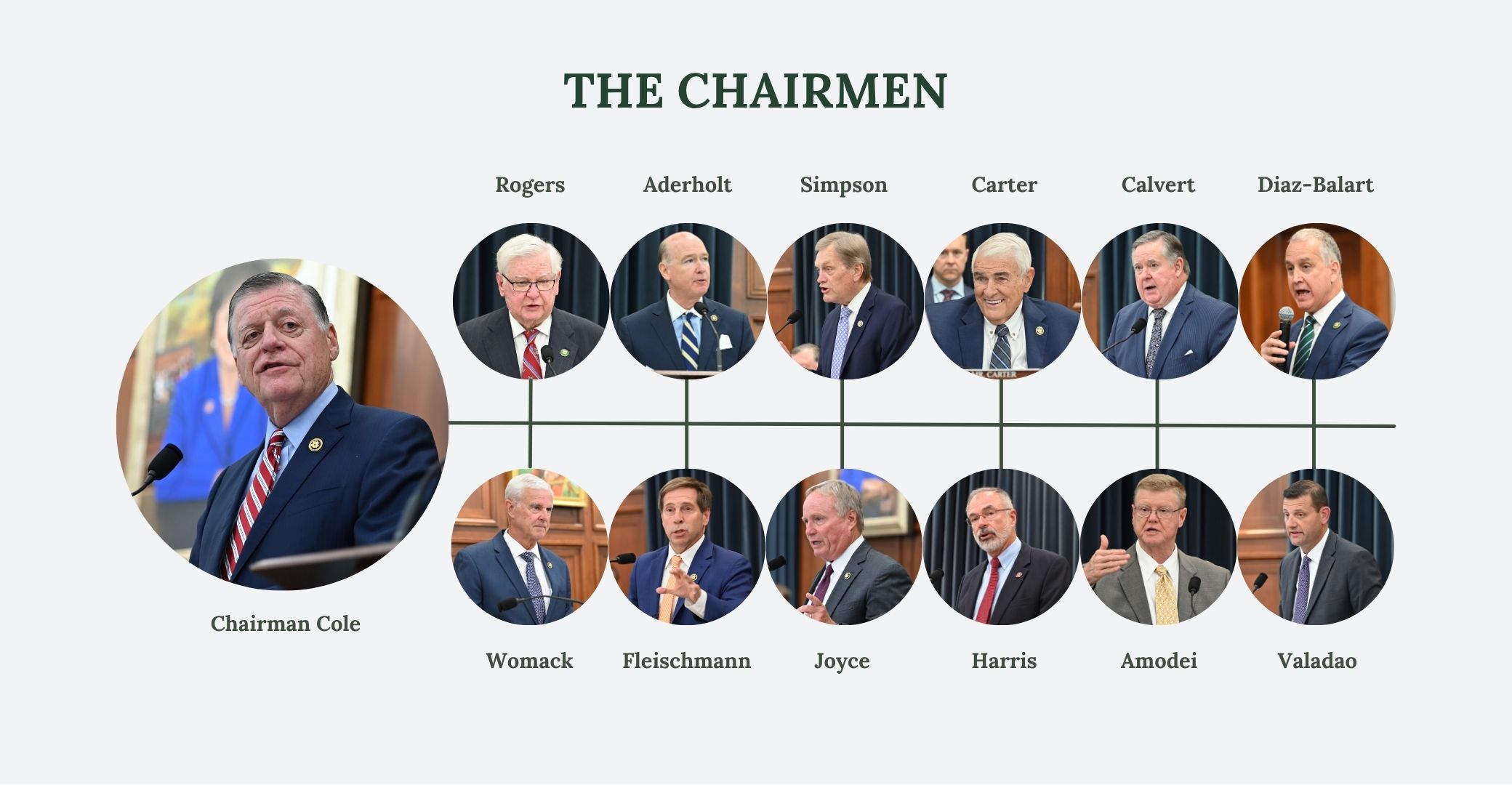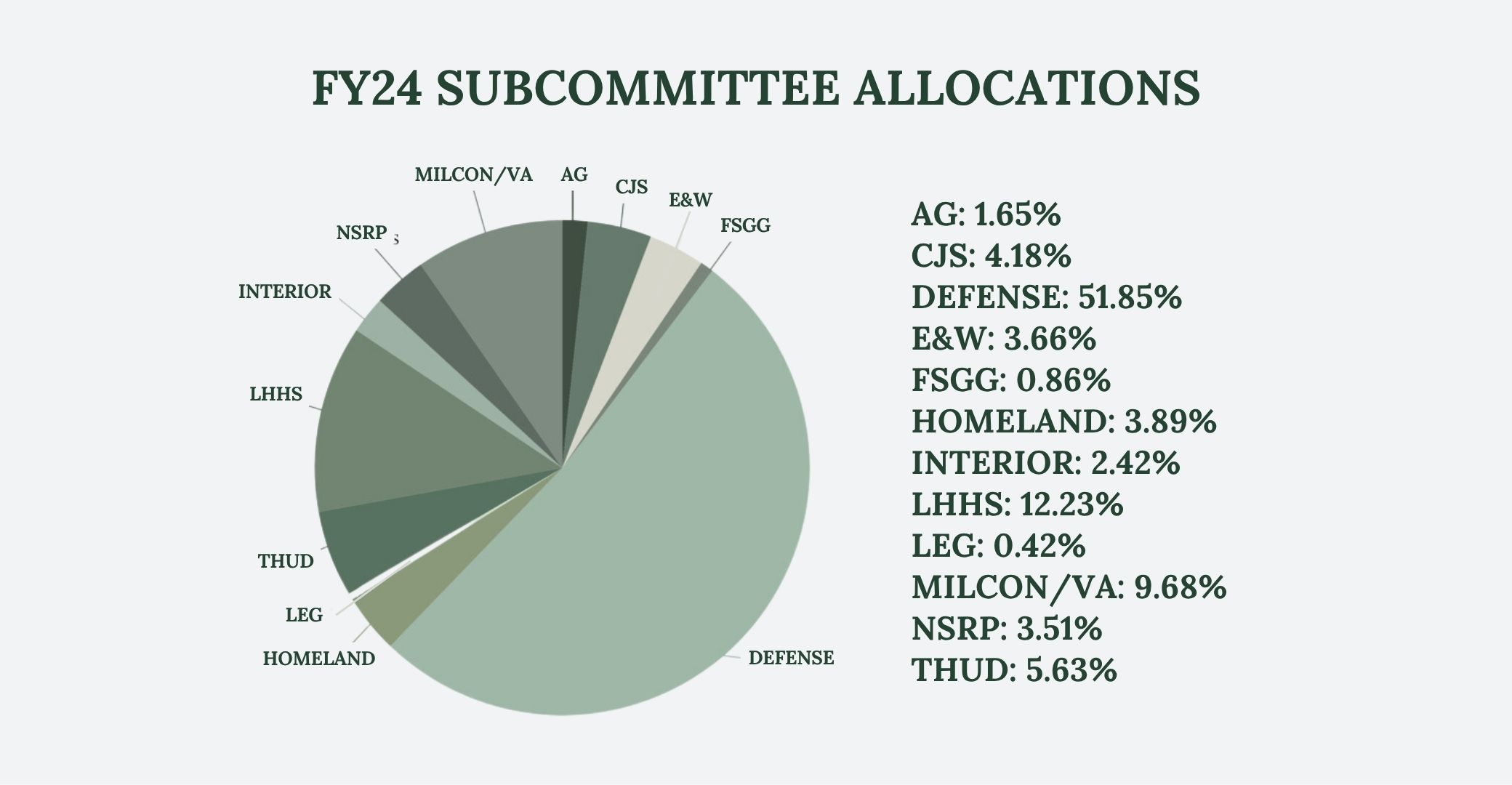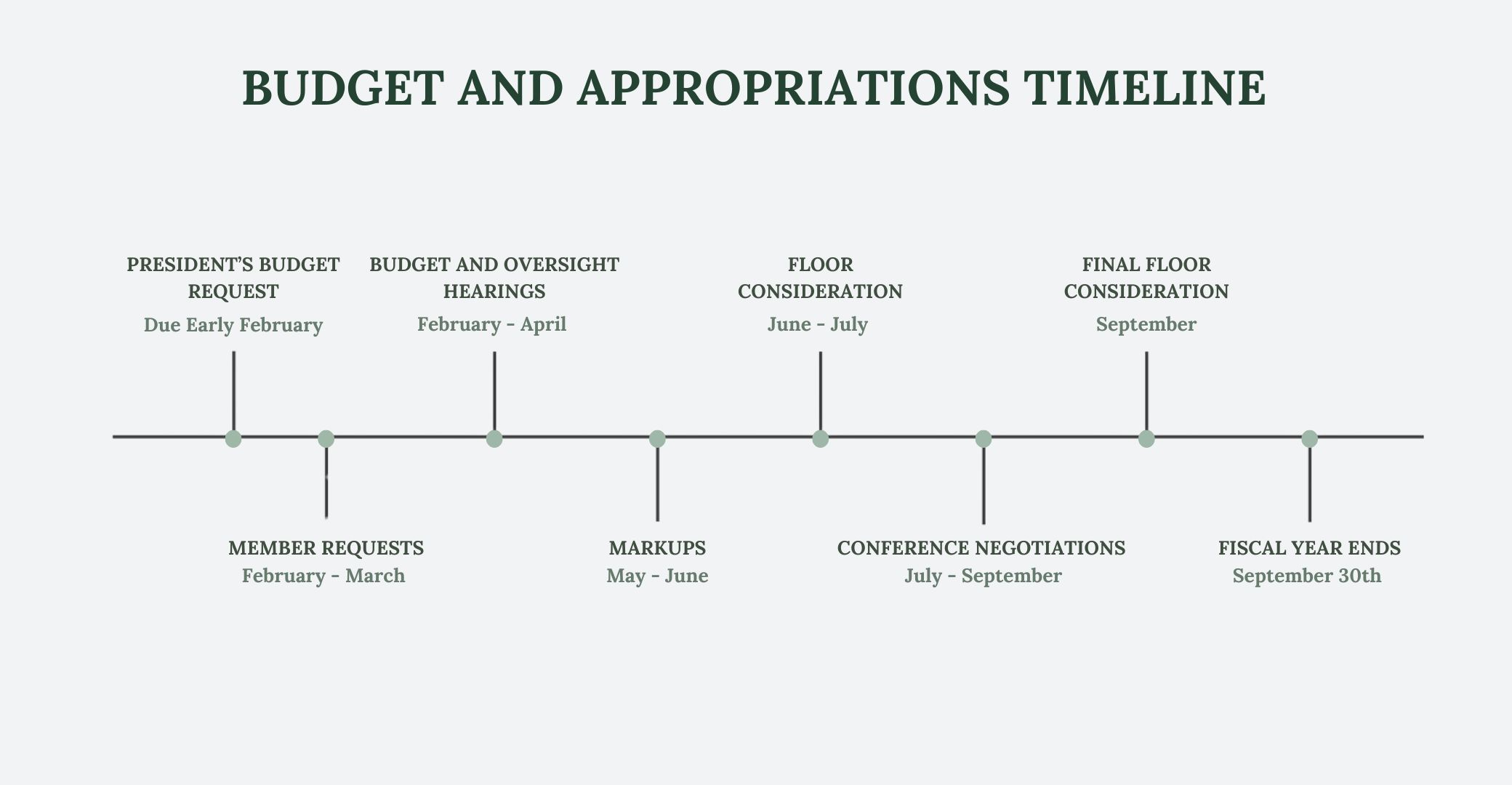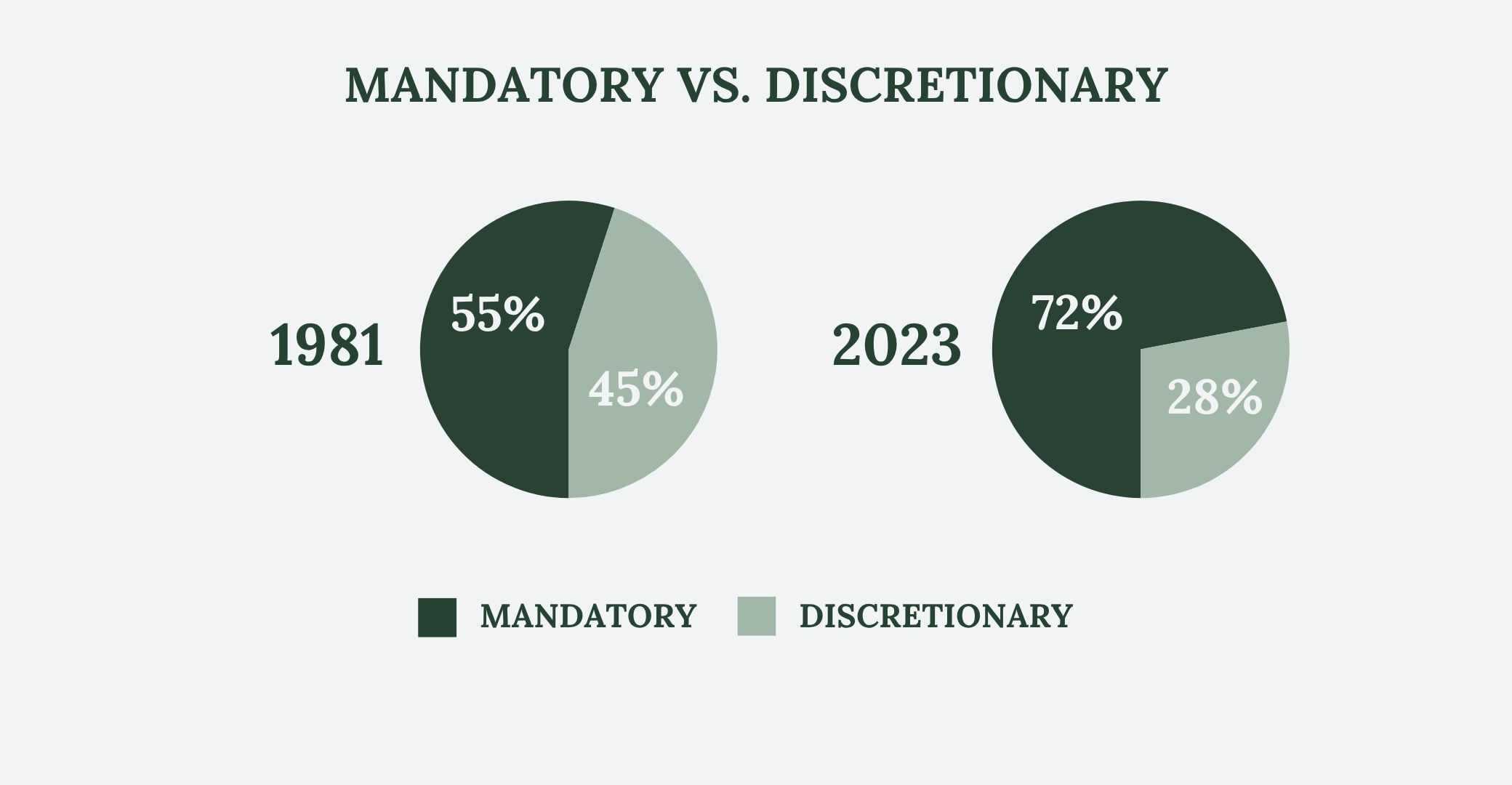The Appropriations Committee: Authority, Process, and Impact
In Congress, the Appropriations Committee stands out for its significant influence over federal spending. The Committee's broad jurisdiction and constitutional authority give it outsized responsibility over the nation's financial resources.
The Committee has 61 Members (34 Republicans and 27 Democrats) and is comprised of 12 subcommittees.

Constitutional Foundation
The Appropriations Committee derives its power from a key provision in the U.S. Constitution:
“No Money shall be drawn from the Treasury, but in Consequence of Appropriations made by Law.”
Article I, Section 9, Clause 7
This statement forms the basis for the Committee's extensive responsibilities, overseeing all discretionary spending of the federal government, and reviewing how Federal tax dollars are spent.
Authorization and Appropriation: A Two-Step Process
The majority of legislation drafted, debated, and passed by Congress are either authorizing or appropriating measures:
- Authorizations: Other Congressional committees, through authorizing bills, establish, continue, direct, or alter federal government agencies and programs. For example, the Armed Services Committee might authorize the Navy to create a program within the Information Operations Command.
- Appropriations: The Appropriations Committee, through the annual appropriations bills, then decides how much funding each authorized federal government agency and program receives, effectively determining which can operate and to what extent. To continue the above example, the Appropriations Committee would decide if and how much to allocate to the recently authorized program within the Navy’s Information Operations Command.
Types of Appropriations
The Committee's work results in several types of funding measures:
- Regular Appropriations: 12 annual spending bills covering different areas of the federal government.
- Continuing Resolutions: Temporary funding measures that bridge the gap from one fiscal year to the next until regular appropriations measures are enacted.
- Supplemental Appropriations: Additional funding to address unexpected needs or shortfalls during the fiscal year, typically due to emergencies.
Mandatory vs. Discretionary Spending
The federal budget is divided into two main categories:
- Mandatory Spending: Predetermined spending that does not require annual appropriations for entitlement programs like Social Security and Medicare, along with interest on the national debt. In FY23, this accounted for 72% of federal spending.
- Discretionary Spending: Resources overseen by the Appropriations Committee that are used to fund a wide range of government activities. In FY23, this comprised 23% of federal spending.
- The Committee’s 12 subcommittees oversee different areas of discretionary spending, with the Defense Subcommittee managing about half of the discretionary budget. The subcommittees are as follows:
- Agriculture, Rural Development, Food and Drug Administration, and Related Agencies
- Commerce, Justice, Science, and Related Agencies
- Defense
- Energy and Water Development and Related Agencies
- Financial Services and General Government
- Homeland Security
- Interior, Environment, and Related Agencies
- Labor, Health and Human Services, Education, and Related Agencies
- Legislative Branch
- Military Construction, Veterans Affairs, and Related Agencies
- National Security, Department of State, and Related Programs
- Transportation, Housing and Urban Development, and Related Agencies
- The Committee’s 12 subcommittees oversee different areas of discretionary spending, with the Defense Subcommittee managing about half of the discretionary budget. The subcommittees are as follows:

*Note: Starting in the 119th Congress, the State and Foreign Operations Subcommittee (SFOPS) is now
recognized as National Security, Department of State, and Related Programs (NSRP).
The Annual Appropriations Process
Each year, the Appropriations Committee follows a structured process where committee members manage, oversee, assess, and then determine the appropriate spending level to allocate to each agency, department, and program:
- The Office of Management and Budget submits the President’s Budget Request, which is due the first Monday in February.
- Members of Congress review the Administration’s request and Appropriators hold Budget and Oversight Hearings where agency leaders defend their funding needs. Congressional representatives and public stakeholders are also able to testify on their requests to the Appropriations Committee.
- Members of Congress submit funding requests for their districts, which must follow released guidance and standards.
- The Budget Committee, through a budget resolution, sets the topline funding level for discretionary spending, also known as the 302(a) allocation, which pertains to section 302(a) of the Congressional Budget Act of 1974.
- The Appropriations Committee then divides the 302(a) allocation into 12 subcommittee allocations, also known as 302(b) allocations.
- Subcommittee leaders draft bills within their 302(b) allocation, allocating resources for the agencies and programs under their subcommittee’s jurisdiction.
- Each bill is brought before its subcommittee and the full committee to be debated and refined through an amendment process. These proceedings are known as markups.
- The bills are brought to the respective chamber floor to be debated, amended, and voted on by the full body.
- Differences between House and Senate versions are reconciled in a conference process, whether formal or informal.
- Final bills return to the floor of each chamber for a final vote before going to the President for signature.

Evolving Fiscal Landscape
As the Appropriations Committee exercises its constitutional authority to appropriate taxpayer resources through discretionary spending, it’s important to highlight the primary driver of our national debt: mandatory spending.
Over time, the balance between mandatory and discretionary spending has shifted significantly. The growth in mandatory spending has reduced the proportion of the budget under the Appropriations Committee's direct control.
As a percentage of federal spending, discretionary spending is nearly half of what it was when Dean Hal Rogers started in Congress (1981).

Projections indicate that interest payments on the national debt will surpass defense spending by 2051, adding urgency to the need to address our fiscal trajectory.
Amidst these challenges, the Appropriations Committee will continue to play a crucial role in shaping national priorities and ensuring responsible use of federal funds on the discretionary side of the ledger. We will also continue to sound the alarm on the greatest fiscal challenge to federal spending. Mandatory programs are consuming an ever-increasing percentage of national resources, and larger debate and education around this issue is needed to address this serious reality. Failing to act with reasonable steps to reform this unchecked part of the balance sheet will leave our children, grandchildren, and coming generations in a grave situation. This responsibility falls on every lawmaker, and Congress owes it to our nation and Americans to act to ensure a future of opportunity continues.
